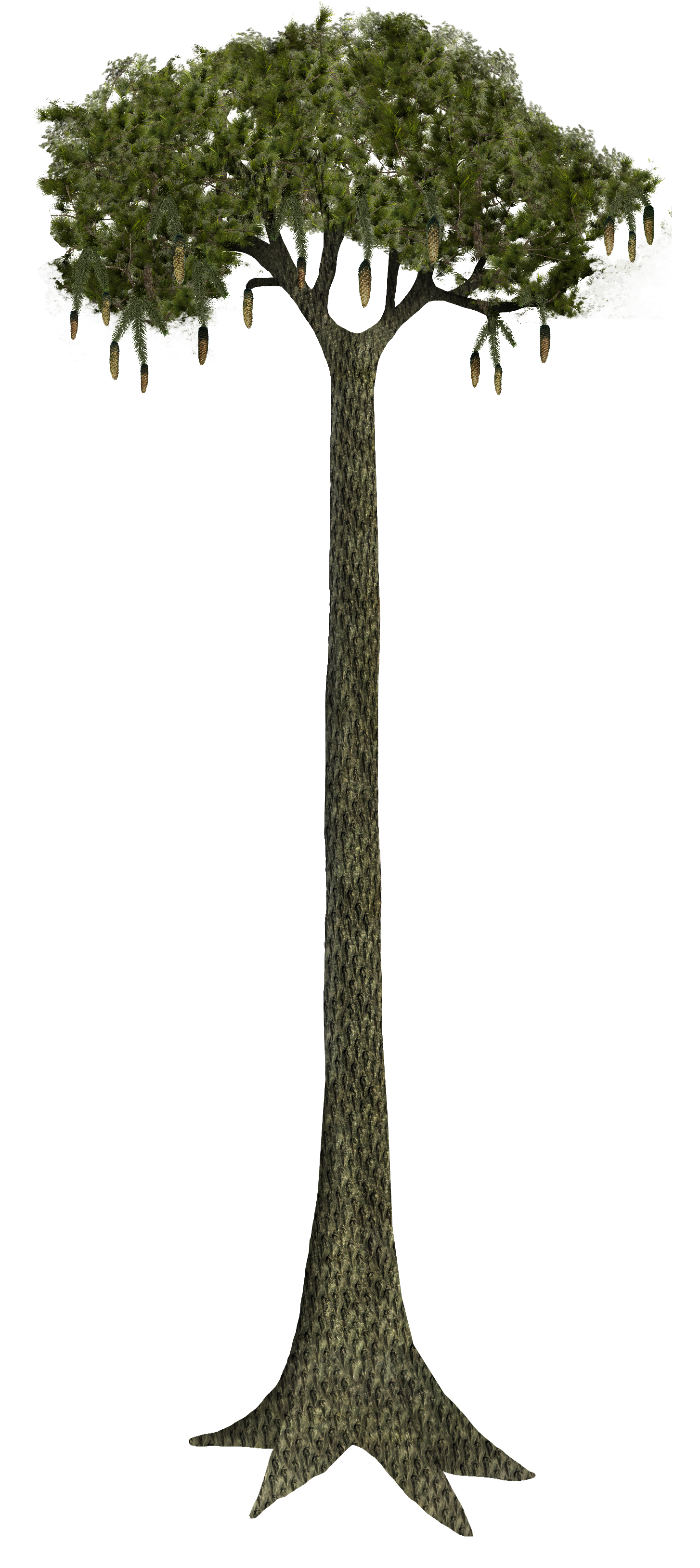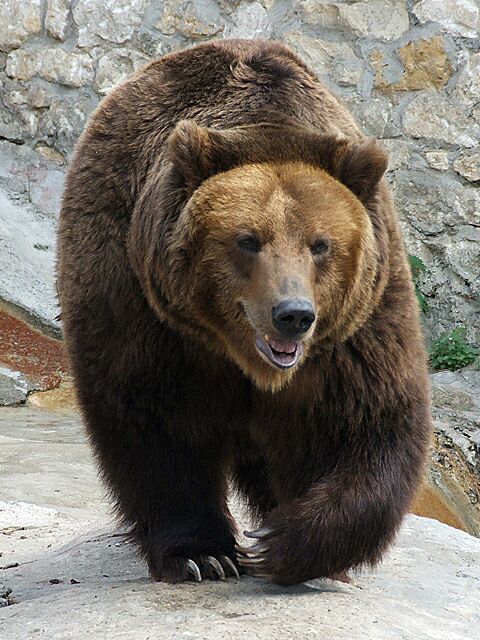|
Dendrolycopodium Dendroideum
''Dendrolycopodium dendroideum'', Synonym (taxonomy), synonym ''Lycopodium dendroideum'', known as tree groundpine, is a North American species of clubmoss. It is part of a complex of species colloquially known as groundpine, which taxa were formerly lumped into the species ''Dendrolycopodium obscurum, Lycopodium obscurum''. The species is native to Russia and also to the colder parts of North America (all states and provinces in Canada except Nunavut; northern and east-central United States including Alaska). The genus ''Dendrolycopodium'' is accepted in the Pteridophyte Phylogeny Group classification of 2016 (PPG I), but not in other classifications, which submerge the genus in ''Lycopodium''. ''Dendrolycopodium dendroideum'' prefers humus-rich, sandy, moist but not completely saturated soils. It is very similar to ''Dendrolycopodium obscurum, D. obscurum'' except for side shoots that are round in cross-section rather than flat, and having leaves all the same size. Uses H ... [...More Info...] [...Related Items...] OR: [Wikipedia] [Google] [Baidu] |
Synonym (taxonomy)
In taxonomy, the scientific classification of living organisms, a synonym is an alternative scientific name for the accepted scientific name of a taxon. The Botanical nomenclature, botanical and Zoological nomenclature, zoological codes of nomenclature treat the concept of synonymy differently. * In nomenclature, botanical nomenclature, a synonym is a Binomial nomenclature, scientific name that applies to a taxon that now goes by a different scientific name. For example, Carl Linnaeus, Linnaeus was the first to give a scientific name (under the currently used system of scientific nomenclature) to the Norway spruce, which he called ''Pinus abies''. This name is no longer in use, so it is now a synonym of the current scientific name, ''Picea abies''. * In zoology, moving a species from one genus to another results in a different Binomial nomenclature, binomen, but the name is considered an alternative combination rather than a synonym. The concept of synonymy in zoology is reserved f ... [...More Info...] [...Related Items...] OR: [Wikipedia] [Google] [Baidu] |
Clubmoss
Lycopodiopsida is a class of vascular plants also known as lycopsids, lycopods, or lycophytes. Members of the class are also called clubmosses, firmosses, spikemosses and quillworts. They have dichotomously branching stems bearing simple leaves called microphylls and reproduce by means of spores borne in sporangia on the sides of the stems at the bases of the leaves. Although living species are small, during the Carboniferous, extinct tree-like forms ( Lepidodendrales) formed huge forests that dominated the landscape and contributed to coal deposits. The nomenclature and classification of plants with microphylls varies substantially among authors. A consensus classification for extant (living) species was produced in 2016 by the Pteridophyte Phylogeny Group (PPG I), which places them all in the class Lycopodiopsida, which includes the classes Isoetopsida and Selaginellopsida used in other systems. (See Table 2.) Alternative classification systems have used ranks from div ... [...More Info...] [...Related Items...] OR: [Wikipedia] [Google] [Baidu] |
Dendrolycopodium Obscurum
''Dendrolycopodium obscurum'', synonym ''Lycopodium obscurum'', commonly called rare clubmoss, ground pine, or princess pine, is a North American species of clubmoss in the family Lycopodiaceae. It is a close relative of other species such as '' D. dendroideum'' and '' D. hickeyi'', also treelike. It is native to the eastern United States and southeastern Canada from Georgia to Minnesota to Nova Scotia. It grows in the understory of temperate coniferous and deciduous forests, where it is involved in seral secondary succession, growing in clonal colonies some years after disturbance has occurred. It has also been found in Japan, Taiwan, Korea, Russian Far East, and northeastern China. Description ''Dendrolycopodium obscurum'' is known for the superficial resemblance of its sporophyte to various conifers. However, its above-ground parts are rarely more than 15 cm (6 inches) tall. Its main stem is actually a subterranean, creeping rhizome, which grows about 6 cm (2.4 in ... [...More Info...] [...Related Items...] OR: [Wikipedia] [Google] [Baidu] |
Nunavut
Nunavut is the largest and northernmost Provinces and territories of Canada#Territories, territory of Canada. It was separated officially from the Northwest Territories on April 1, 1999, via the ''Nunavut Act'' and the Nunavut Land Claims Agreement, ''Nunavut Land Claims Agreement Act'', which provided this territory to the Inuit for self-government. The boundaries had been drawn in 1993. The creation of Nunavut resulted in the territorial evolution of Canada, first major change to Canada's political map in half a century since the province of Newfoundland and Labrador, Newfoundland (now Newfoundland and Labrador) was admitted in 1949. Nunavut comprises a major portion of Northern Canada and most of the Arctic Archipelago. Its vast territory makes it the list of the largest country subdivisions by area, fifth-largest country subdivision in the world, as well as North America's second-largest (after Greenland). The capital Iqaluit (formerly "Frobisher Bay"), on Baffin Island in ... [...More Info...] [...Related Items...] OR: [Wikipedia] [Google] [Baidu] |
Dendrolycopodium
The genus ''Dendrolycopodium'' is a clubmoss genus in the family Lycopodiaceae. In the Pteridophyte Phylogeny Group classification of 2016 (PPG I), it is placed in the subfamily Lycopodioideae. Some sources do not recognize the genus, sinking it into '' Lycopodium''. It is treated as section ''Obscura'' when retained within ''Lycopodium''. The genus includes a discrete group of plants with similar morphologies. All have erect to semi-erect, branched stems. Species , the ''Checklist of Ferns and Lycophytes of the World'' recognized the following species: * ''Dendrolycopodium dendroideum ''Dendrolycopodium dendroideum'', Synonym (taxonomy), synonym ''Lycopodium dendroideum'', known as tree groundpine, is a North American species of clubmoss. It is part of a complex of species colloquially known as groundpine, which taxa were for ...'' (Michx.) A.Haines – northern North America, eastern Asia * '' Dendrolycopodium hickeyi'' (W.H.Wagner, Beitel & R.C.Moran) A.Haines – northea ... [...More Info...] [...Related Items...] OR: [Wikipedia] [Google] [Baidu] |
Pteridophyte Phylogeny Group
The Pteridophyte Phylogeny Group (PPG) is an informal international group of systematic botanists who collaborate to establish on the classification of pteridophytes ( lycophytes and ferns) that reflects knowledge about plant relationships discovered through phylogenetic studies. In 2016, the group published a classification for extant pteridophytes, termed "PPG I". The paper had 94 authors (26 principal and 68 additional). The classification was presented as a consensus classification supported by the community of fern taxonomists. Alternative classifications of ferns exist and are preferred by some. PPG I A first classification, PPG I, was produced in 2016, covering only extant (living) pteridophytes. The classification was rank-based, using the ranks of class, subclass, order, suborder, family, subfamily and genus. Phylogeny The classification was based on a consensus phylogeny, shown below to the level of order. The very large order Polypodiales was divided into two subord ... [...More Info...] [...Related Items...] OR: [Wikipedia] [Google] [Baidu] |
Lycopodium
''Lycopodium'' (from Ancient Greek ''lykos'', wolf and ''podion'', diminutive of ''pous'', foot) is a genus of clubmosses, also known as ground pines or creeping cedars, in the family Lycopodiaceae. Two very different circumscriptions of the genus are in use. In the Pteridophyte Phylogeny Group classification of 2016 (PPG I), ''Lycopodium'' is one of nine genera in the subfamily Lycopodioideae, and has from nine to 15 species. In other classifications, the genus is equivalent to the whole of the subfamily, since it includes all of the other genera. More than 40 species are accepted. Description They are flowerless, vascular, terrestrial or epiphytic plants, with widely branched, erect, prostrate, or creeping stems, with small, simple, needle-like or scale-like leaves that cover the stem and branches thickly. The stems usually creep along the ground, forking at intervals. The leaves contain a single, unbranched vascular strand, and are microphylls by definition. They are usually ... [...More Info...] [...Related Items...] OR: [Wikipedia] [Google] [Baidu] |
Christmas Decorations
A Christmas decoration is any of several types of ornamentation used at Christmas and the greater Christmas and holiday season. Typical images on Christmas decorations include Baby Jesus, Mary, mother of Jesus, Mother Mary, Angels in Christianity, angels, Father Christmas, Santa Claus, and the star of Bethlehem. Advent wreaths, nativity scenes, Illumination (decoration), illuminations, and Moravian stars are popular Christmas decorations. In many countries, such as Sweden, people start to set up their Advent and Christmas decorations on the Advent Sunday, first day of Advent. Christian liturgy, Liturgically, this is done in some parish church, parishes through a Hanging of the Greens ceremony. In the Western Christianity, Western Christian world, the two traditional days when Christmas decorations are removed are Twelfth Night (holiday), Twelfth Night and if they are not taken down on that day, Candlemas, the latter of which ends the Epiphanytide, Christmas-Epiphany season in ... [...More Info...] [...Related Items...] OR: [Wikipedia] [Google] [Baidu] |
Lycopodium Powder
Lycopodium powder is a yellow-tan dust-like powder, consisting of the dry spores of clubmoss plants, or various fern relatives. When it is mixed with air, the spores are highly flammable and are used to create dust explosions as theatrical special effects. The powder was traditionally used in physics experiments to demonstrate phenomena such as Brownian motion. Composition The powder consists of the dry spores of clubmoss plants, or various fern relatives principally in the genera '' Lycopodium'' and '' Diphasiastrum''. The preferred source species are ''Lycopodium clavatum'' (stag's horn clubmoss) and ''Diphasiastrum digitatum'' (common groundcedar), because these widespread and often locally abundant species are both prolific in their spore production and easy to collect. Main uses Today, the principal use of the powder is to create flashes or flames that are large and impressive but relatively easy to manage safely in magic acts and for cinema and theatrical special ... [...More Info...] [...Related Items...] OR: [Wikipedia] [Google] [Baidu] |
Lycopodiaceae
The Lycopodiaceae (class Lycopodiopsida, order Lycopodiales) are an old family of vascular plants, including all of the core clubmosses and firmosses, comprising 17 accepted genera and about 500 known species. This family originated about 380 million years ago in the early Devonian, though the diversity within the family has been much more recent. "Wolf foot" is another common name for this family due to the resemblance of either the roots or branch tips to a wolf's paw. Description Members of Lycopodiaceae are not spermatophytes and so do not produce seeds. Instead they produce spores, which are oily and flammable, and are the most economically important aspects of these plants. The spores are of one size (i.e. the plants are isosporous) and are borne on a specialized structure at the apex of a shoot called a strobilus (plural: strobili), which resembles a tiny battle club, from which the common name derives. Members of the family share the common feature of having a microphy ... [...More Info...] [...Related Items...] OR: [Wikipedia] [Google] [Baidu] |
Flora Of Northern America
Flora (: floras or florae) is all the plant life present in a particular region or time, generally the naturally occurring ( indigenous) native plants. The corresponding term for animals is ''fauna'', and for fungi, it is '' funga''. Sometimes bacteria and fungi are also referred to as flora as in the terms ''gut flora'' or ''skin flora'' for purposes of specificity. Etymology The word "flora" comes from the Latin name of Flora, the goddess of plants, flowers, and fertility in Roman mythology. The technical term "flora" is then derived from a metonymy of this goddess at the end of the sixteenth century. It was first used in poetry to denote the natural vegetation of an area, but soon also assumed the meaning of a work cataloguing such vegetation. Moreover, "Flora" was used to refer to the flowers of an artificial garden in the seventeenth century. The distinction between vegetation (the general appearance of a community) and flora (the taxonomic composition of a community) wa ... [...More Info...] [...Related Items...] OR: [Wikipedia] [Google] [Baidu] |
Flora Of Russia
The wildlife of Russia inhabits terrain that extends across 12 time zones and from the tundra region in the far north to the Caucasus Mountains and prairies in the south, including temperate forests which cover 70% of the country. Russia's forests comprise 22% of the forest in the world as well as 33% of all temperate forest. According to the data furnished in the '' Red Data Book of the Russian Federation'', as of 1996, there were 266 mammal species and 780 bird species under protection. Some of the threatened plant species are the Siberian cedar pine, Korean cedar pine in the far eastern part of the country, wild chestnut in the Caucasus. In the Russian Far East, brown bears, Eurasian lynx, and red deer, Amur tigers, Amur leopards, and Asiatic black bears are reported. There are also about 350 bird species and 30 percent of Russia's endangered species are found. Carnivores under threat include the Siberian tiger, numbered at 400, and the Amur leopard of which only 30 remained ... [...More Info...] [...Related Items...] OR: [Wikipedia] [Google] [Baidu] |






